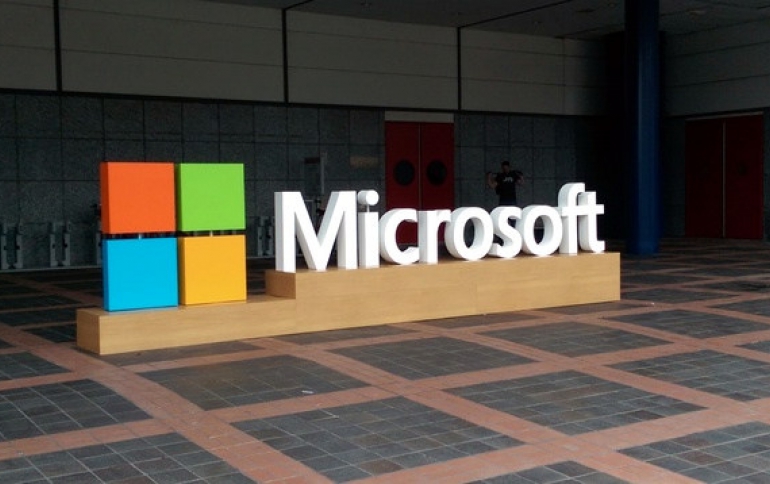
Microsoft Releases New Cloud Services for AI and Blockchain
Microsoft on Thursday announced new tools for software makers aimed at making technologies such as artificial intelligence and blockchain easier for businesses to use.
Microsoft announced a new set of Azure AI technology:
- Microsoft is launching a new Cognitive Services category, called “Decision,” that delivers users a specific recommendation for more informed and efficient decision-making. This category includes Content Moderator, the recently announced Anomaly Detector, and a new service called Personalizer, which uses reinforcement learning to provide users with a specific recommendation to enable quick and informed decision-making.
- Microsoft is bringing AI to Azure Search with the general availability of the cognitive search capability, enabling its customers to apply Cognitive Services algorithms to extract new insights from their structured and unstructured content. In addition, Microsoft previewed a new capability that enables developers to store AI insights gained from cognitive search.
New features in Azure Machine Learning simplify the process of building, training and deploying machine learning models:
- MLOps capabilities with Azure DevOps integration provides developers with reproducibility, auditability and automation of the end-to-end machine learning lifecycle.
- Automated ML advancements and a UI make developing high-quality models easier.
- Visual machine learning interface provides no-code model creation and deployment experience with drag-and-drop capabilities.
- To enable extremely low latency and cost-effective inferencing, Microsoft announced the general availability of hardware–accelerated models that run on FPGAs, as well as ONNX Runtime support for NVIDIA TensorRT and Intel nGraph for high-speed inferencing on NVIDIA and Intel chipsets.
Microsoft also introduced several new products and solutions today to address the needs of hybrid cloud and edge computing:
- Microsoft introduced Azure SQL Database Edge to support the spectrum of edge compute needs. A SQL engine optimized for lower compute requirements with built-in AI, the product combines data streaming with in-database machine learning and graph capabilities to enable intelligence on the edge. Because Azure SQL Database Edge shares the same programming surface area with Azure SQL Database and SQL Server, developers can easily take applications to the edge without having to learn new tools and languages.
- Microsoft also announced IoT Plug and Play, a new open modeling language to connect IoT devices to the cloud, enabling developers to navigate one of the biggest challenges they face — deploying IoT solutions at scale. Previously, software had to be written specifically for the connected device it supported, limiting the scale of IoT deployments. IoT Plug and Play will offer Microsoft's customers anecosystem of partner-certified devices that can connect quickly.
- For mixed-reality development, Microsoft is making it easier to create for HoloLens 2 with the HoloLens 2 Development Edition, which provides the community of mixed- reality developers with access to solutions to help them build and run mixed-reality experiences across a range of devices.
- Unreal Engine 4 support for streaming and native platform integration for HoloLens 2 will be available for developers by the end of May to create photo-realistic renders and mixed-reality experiences for solutions spanning architecture, product design, manufacturing and more.
While Microsoft still trails the cloud computing leader Amazon.com Inc’s Amazon Web Services in revenue, it has taken a different approach to the market, designing many of its services to be run in either Microsoft’s Azure data centers, its customers private data centers, or a combination of the two.
Amazon, by contrast, at first asked customers move their data to its own servers, though it too has in recent years moved toward Microsoft’s “hybrid” approach.
Empowering blockchain developers
Last year, Microsoft announced Azure Blockchain Workbench, which gave developers a simple UI to model blockchain applications on a preconfigured Azure-supported network. Today’s announcements take it even further.
Azure Blockchain Service simplifies the formation, management and governance of consortium blockchain networks, allowing businesses to focus on workflow logic and app development. Azure Blockchain Service deploys a fully managed consortium network and offers built-in governance for common management tasks, such as adding new members, setting permissions and authenticating user applications.
Microsoft also announced this week that J.P. Morgan’s Ethereum platform, Quorum, is the first ledger available in Azure Blockchain Service, giving Microsoft and J.P. Morgan customers the ability to deploy and manage scalable blockchain networks in the cloud.
Microsoft's Build conference will be held next week in Seattle, and the company will provide more details about the latest advancements in cloud and developer technologies.




















